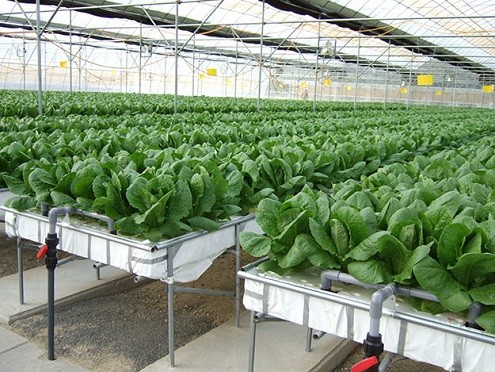Aquaponics is an alternative style of growing that provides fertilizer for planting in a hydroponic environment while also providing a cleaner environment for fish to live.
There are drawbacks, but this amazing method of growing food is being improved upon everyday; here are some of the benefits and drawbacks as well as what you need to get started.
Advantages and Disadvantages of Aquaponics Over Traditional Gardening
Obviously, having protein in addition to your vegetables is a good thing. It is also a more water-efficient methodology, using about a tenth as much water as a typical garden. Not only that, but it can function as “active” water storage, since the water is “being used” rather than just sitting there. It is less strenuous.
There is work which needs to be done, but with proper layout, this work is much less physically intense than caring for ground-based plants. It is more flexible in location and environment and is more eco-friendly.
On the down side, note that fish waste is high in ammonia, which is nasty stuff. The hydroponics system must contain a bacteria which converts ammonia to nitrites and another bacteria which converts nitrites to nitrates. This process, called nitrification, is key to the system, and must be monitored over time, as if the process fails, the ammonia or nitrites will build up and kill every part of the system. So although the work is less strenuous, you can’t just “go off and leave it” for a period of time.
Like preparing a garden plot, an aquaponics system must be prepared (“cycled”) before fish will be able to survive in it. This is a lot less labor than tilling and plowing and such, but it is a process which takes six weeks or more to complete.
Setting Up an Aquaponics System
What is needed? Well, for the fish, water is needed, and some sort of tank or tanks to keep the water together. A “pond” (hole in the ground) might work for aquaculture, but would be more difficult to interface with the hydroponics portion of the system. Besides, using tanks provides greater control, conservation and unobtrusiveness. Many people make their tanks from used polyethylene barrels or IBCs (intermediate bulk containers). Of course, these must have never contained toxic materials, and be thoroughly cleaned before use. New containers are usually available, but the cost is significantly higher. Other possibilities include discarded bathtubs and hot tubs, or kiddie pools. You can even build “liner tanks”, which are boxes made out of wood or other materials, with waterproof liners.
Just filling the tanks from a tap is often not the best idea. Clean rainwater is a really good source, or tap/well water which has gone through Reverse Osmosis. Water from a private or public utility well tends to be high in carbonates and other unfortunate impurities. The chlorines and chloramines which are often the most harmful to the fish can be filtered out as part of the initial cycle process, but the carbonates and some other impurities won’t be.
Then, you need a pump and pipe system to suck the water (and waste) out of the tank and deliver it to the hydroponics system. It would be best if this was powered by batteries, with the batteries charged by solar panels so that it will run at any time, in any weather. This should be a fairly powerful pump, as the pumping process oxygenates the water, which is important for the fish, as well as for the oxygen based conversions performed by the bacteria. If powered by normal power, at least one backup system is critical in case power goes out. Some options are: generator with a good supply of fuel, hand pump, wind generator or pump, solar only system, water generator (if near a reliable moving water source), or a human powered generator (using a bicycle is usually the least onerous). The reason these methods are considered “backup” is because ideally you want the water circulating continuously in order to maximize oxidation as well as prevent the plant’s roots from rotting, and with the possible exception of the water generator, all of these tend to be intermittent. The most important time for water to be circulating is while photosynthesis is taking place, so having pumping during the day may be adequate, which makes direct solar more attractive than the other backup methodologies.
There are several techniques used for hydroponics; the most practical for an aquaponics setup seems to be the “media bed” system. Fortunately, this technique is easy to operate, as well as easy and inexpensive to set up. As you might guess from the name, you need the “bed” for the hydroponics, which can be made out of the same selection of materials as the fish tanks. This would be filled with the “media.” Best would be something specifically for hydroponics, like “hydroton,” but expanded shale or 3/4″ crushed granite will work adequately. What you are looking for is something which has high surface area, but does not clog or contain a lot of carbonates.
Then there is the piping to return the water to the fish tanks, and that is about it for the system itself.
Growing your own food is key to survival – it is one less thing you have to worry about as you muddle through a crisis.
An option for growing your own food is Aquaponics, which uses fish waste for fertilizer in a hydroponics setting, helping the fish and the hydroponic style of growing.
To learn more about hydroponics, please visit Survival Life.
